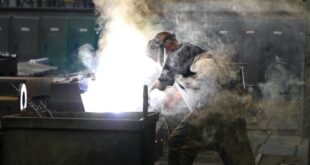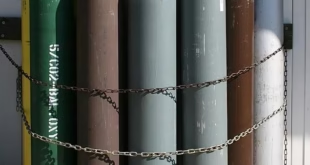Skin Care for Welders
Introduction
Skin care is a crucial aspect of maintaining overall health and well-being, and this holds especially true for welders. The demanding nature of their profession exposes welders to a myriad of hazards, including intense heat, harmful ultraviolet (UV) radiation, sparks, and metal fumes. These factors significantly impact the health and condition of their skin, making proper skin care an essential part of their daily routine.
Welders face unique challenges when it comes to skin health due to the nature of their work. The extreme heat generated during welding can cause burns and thermal injuries to the skin. The intense UV radiation emitted during the welding process poses a risk of sunburn, premature aging, and even skin cancer. Additionally, the sparks and flying debris can cause cuts, abrasions, and irritations, while prolonged exposure to metal fumes and other airborne contaminants can lead to skin conditions such as contact dermatitis or skin allergies.
Common Skin Issues for Welders:
Welders are exposed to a range of potential skin problems due to the nature of their work. Understanding these issues is crucial for implementing effective preventive measures and appropriate treatment when necessary. Here are some of the typical skin problems encountered by welders:

- Burns: Welders face a high risk of thermal burns due to the intense heat generated during the welding process. Direct contact with hot metal, sparks, or welding equipment can cause painful burns to the skin. Depending on the severity, these burns can range from mild to severe and may require medical attention.
- Cuts and Abrasions: Welding often involves working with sharp tools and materials, which increases the likelihood of cuts and abrasions. Handling metal pieces, wires, or welding electrodes can result in accidental injuries to the skin. These wounds need proper cleaning, disinfection, and appropriate dressings to prevent infection.
- Irritations and Rashes: Prolonged exposure to metal fumes, welding byproducts, and airborne contaminants can cause skin irritations and allergic reactions. Welders may experience redness, itching, swelling, or rash-like symptoms, known as contact dermatitis. This condition can be uncomfortable and may require medical intervention or adjustments in workplace practices to minimize exposure.
In addition to these immediate skin issues, welders also face risks associated with long-term exposure to certain elements in their work environment:
- UV Radiation: Welding produces intense UV radiation, particularly during processes like arc welding. Continuous exposure to UV radiation without proper protection can lead to sunburn, skin damage, and an increased risk of skin cancer. The face, neck, and arms are particularly vulnerable to UV-related issues.
- Heat-related Problems: The high temperatures generated during welding can result in excessive sweating and skin dryness. Prolonged exposure to heat can cause dehydration, discomfort, and dry skin conditions such as heat rash or heat-related skin irritation.
- Metal Fume Exposure: Welding often involves working with metals that produce hazardous fumes when heated. Inhaling these fumes is a primary concern, but they can also irritate the skin upon contact. Prolonged exposure to metal fumes can lead to conditions like metal fume fever or chemical burns on the skin.
Pre-Welding Skin Preparation:
Proper pre-welding skin preparation is essential for welders to maintain healthy and protected skin during their work. By following a few simple steps, welders can minimize the risk of contaminants getting trapped on their skin and reduce the potential for skin problems. Here are some key aspects of pre-welding skin preparation:
- Importance of Clean Skin: Clean skin is crucial before welding to prevent the accumulation of contaminants on the surface. Dirt, dust, oils, and other substances on the skin can react with the intense heat and sparks generated during welding, leading to skin irritations or other complications. Therefore, it is essential to start each welding session with clean skin.
- Thoroughly Wash with Mild Soap and Water: Before welding, it is recommended to wash the skin thoroughly with mild soap and water. This helps remove any dirt, oil, or residue that may be present on the skin’s surface. Pay particular attention to areas that are exposed or prone to contamination, such as the face, neck, arms, and hands.Use a mild, pH-balanced soap that is suitable for sensitive skin to avoid further skin irritation. Gently lather the soap and wash the skin, ensuring that all areas are thoroughly cleansed. Rinse with clean water and pat dry with a clean towel.
- Application of Protective Barrier Cream or Lotion: After washing, it is beneficial to apply a protective barrier cream or lotion to create a barrier between the skin and welding byproducts. This additional layer of protection helps minimize direct contact between the skin and potential irritants, such as metal fumes or sparks.Look for barrier creams or lotions specifically formulated for industrial or welding applications. These products often contain ingredients that form a protective film on the skin’s surface, acting as a barrier against contaminants. Apply the cream or lotion to exposed skin, paying attention to areas susceptible to heat, sparks, or fumes.
Post-Welding Skin Care
Proper post-welding skin care is crucial for welders to effectively remove contaminants and minimize skin irritation after their work. Taking the time to care for the skin following welding sessions can help prevent long-term skin problems and maintain overall skin health. Here are some key aspects of post-welding skin care:
- Importance of Removing Contaminants: After welding, the skin may be exposed to various contaminants, such as metal particles, dirt, and welding byproducts. These substances can linger on the skin’s surface and potentially lead to skin irritations, rashes, or other complications if left unaddressed. It is essential to promptly remove these contaminants to maintain skin health.
- Wash the Skin with Mild Soap and Water: Immediately after welding, wash the skin with mild soap and water to thoroughly cleanse and remove any residual substances. Use lukewarm water and a gentle, pH-balanced soap to avoid further skin irritation. Focus on areas that were directly exposed during welding, such as the face, neck, arms, and hands.Gently lather the soap and wash the skin, ensuring that all areas are cleaned. Pay extra attention to areas where sweat, welding byproducts, or sparks may have accumulated. Rinse the skin thoroughly with clean water and pat dry with a clean towel.
- Moisturizers and Emollients: After cleansing the skin, it is beneficial to replenish moisture and maintain skin hydration. Prolonged exposure to the intense heat and sparks of welding can cause dryness, leading to discomfort, itchiness, and potential skin cracks. Moisturizers and emollients play a vital role in preventing dryness and maintaining the skin’s integrity.Choose moisturizers specifically formulated for dry or sensitive skin. Look for products that are fragrance-free and hypoallergenic to minimize the risk of skin reactions. Apply the moisturizer generously to clean, dry skin, focusing on areas that tend to be more prone to dryness, such as the hands, forearms, and face.
Addressing Specific Skin Issues
Welders may encounter various skin problems as a result of their work, ranging from burns and cuts to specific conditions caused by welding, such as contact dermatitis or heat rash. Prompt and appropriate treatment is essential to prevent complications and promote healing. Here are some remedies and suggestions for addressing specific skin issues faced by welders:
Burns, Cuts, and Abrasions:
Burns: For minor thermal burns, immediately cool the affected area with cold running water for several minutes to minimize tissue damage. Avoid using ice or very cold water, as they can further harm the skin. Apply a sterile, non-adhesive dressing to protect the burn and promote healing. Seek medical attention for more severe burns.
Cuts and Abrasions: Cleanse the wound with mild soap and water to remove debris and prevent infection. Apply an antiseptic solution or ointment and cover the wound with a sterile dressing or bandage. If the cut is deep or bleeding heavily, seek medical attention.
Contact Dermatitis:
Identify and Avoid Triggers: Determine the specific substances or materials that trigger contact dermatitis. This may involve consulting a dermatologist or conducting patch testing. Once identified, avoid contact with those substances as much as possible.
Protective Measures: Ensure the use of appropriate PPE, such as gloves and protective clothing, to minimize skin exposure to potential irritants. Follow proper hygiene practices, including washing the affected area with mild soap and water after exposure. Apply topical corticosteroids or non-prescription hydrocortisone creams to reduce inflammation and itching. Seek medical advice for severe or persistent cases.
Heat Rash
Cool and Dry the Skin: To alleviate heat rash, move to a cool and well-ventilated area. Remove any tight or restrictive clothing that may contribute to heat and sweat buildup. Gently cleanse the affected area with cool water and mild soap. Pat the skin dry, avoiding excessive rubbing.
Keep the Skin Dry: Wear loose, breathable clothing made from moisture-wicking fabrics to promote air circulation and reduce sweating. Applying talcum powder or cornstarch to affected areas can help absorb excess moisture and reduce friction.
Metal Fume-related Conditions
Metal Fume Fever: Metal fume fever is often self-limiting and resolves without treatment. Resting, staying hydrated, and taking over-the-counter pain relievers, such as ibuprofen, can help alleviate symptoms. If symptoms persist or worsen, seek medical attention.
Chemical Burns: Rinse the affected area with cool running water for at least 15 minutes to remove any chemical residue. Remove contaminated clothing carefully to avoid further exposure. Seek immediate medical attention for chemical burns, as they may require specific treatment.
FAQs
How do you protect your skin when welding?
Welders can protect their skin by wearing appropriate personal protective equipment (PPE) such as gloves, long sleeves, and a welding helmet with a face shield. They should also ensure proper fit and coverage of PPE.
What do welders wear on their face?
Welders typically wear a welding helmet with a face shield to protect their face from sparks, heat, and UV radiation. The face shield provides a clear protective barrier for the eyes, face, and neck.
How do you treat welding burn on skin?
To treat a welding burn, immediately cool the affected area with cold running water for several minutes. Apply a sterile, non-adhesive dressing and seek medical attention for more severe burns.
Does sunscreen help with welding?
Sunscreen alone may not provide sufficient protection against the intense UV radiation produced during welding. It is essential to use a welding helmet with a face shield to protect against UV radiation.
What is the best treatment for a metal burn?
The best treatment for a metal burn depends on the severity of the burn. For minor burns, cool the area with cold water and apply a sterile dressing. Seek medical attention for more severe burns.
How long do welding burns last?
The healing time for welding burns can vary depending on the severity of the burn. Superficial burns may heal within a few days to a week, while deeper burns may require weeks or even months to fully heal.
Why do I itch after welding?
Itching after welding may be a result of contact with welding byproducts, such as metal particles or fumes, which can irritate the skin. It is important to wash the skin thoroughly after welding to remove any potential irritants.
Does welding affect sperm?
There is limited research on the direct effects of welding on sperm. However, exposure to certain welding fumes and chemicals may have potential reproductive health risks. It is important for welders to follow safety protocols and minimize exposure to hazards.
What vitamins should welders take?
Welders should aim for a balanced diet that includes a variety of fruits, vegetables, whole grains, lean proteins, and healthy fats. While specific vitamin recommendations may vary, ensuring adequate intake of vitamins C, E, and D, as well as minerals like zinc, can support overall health. It’s best to consult with a healthcare professional for personalized advice.
Conclusion
In conclusion, the article has highlighted the significance of skin care for welders, considering the unique challenges they face in their profession. We discussed common skin issues encountered by welders, including burns, cuts, abrasions, and the risks associated with prolonged exposure to UV radiation, heat, and metal fumes.
 Welding of Welders All about Welding and Welders
Welding of Welders All about Welding and Welders



